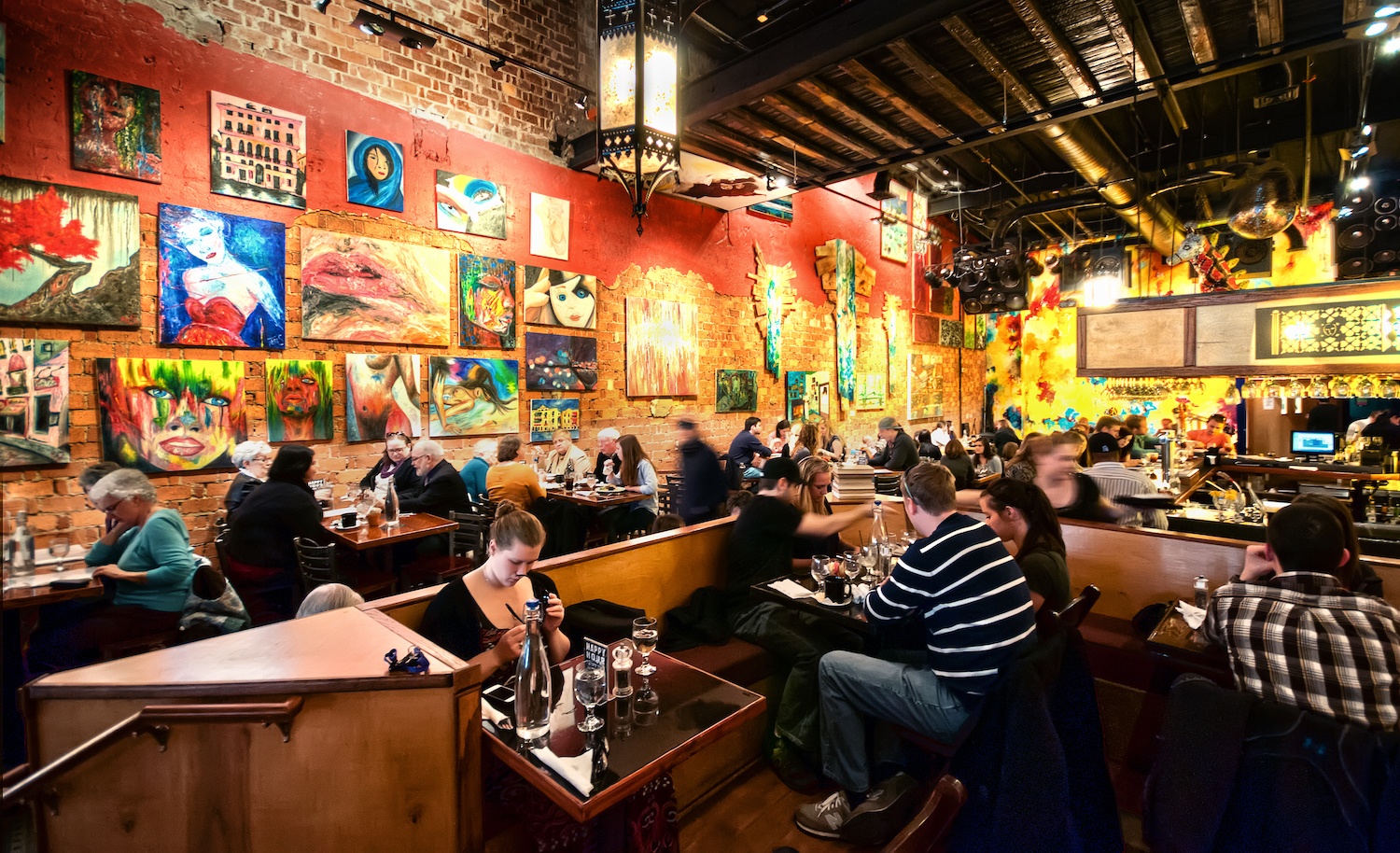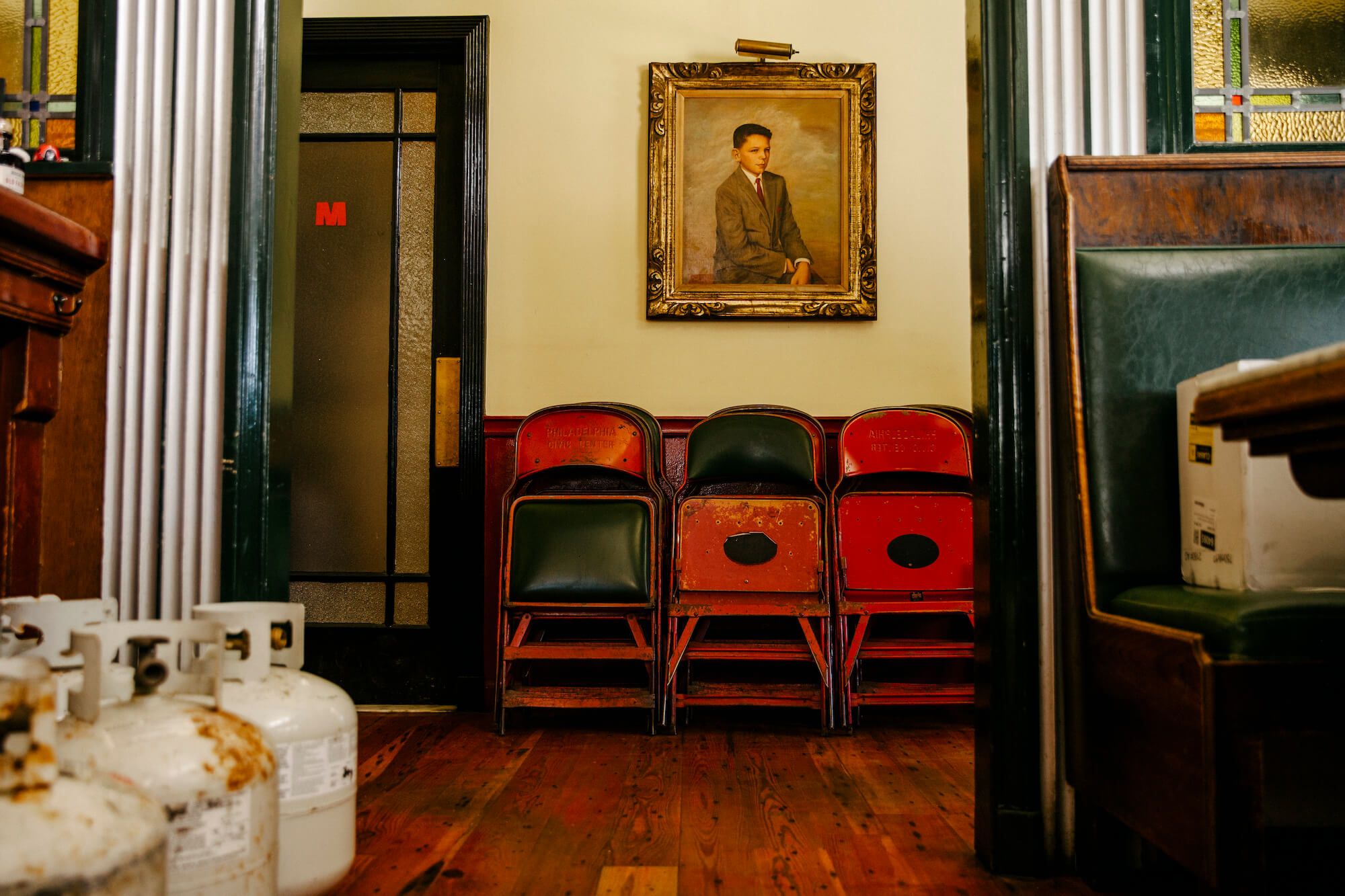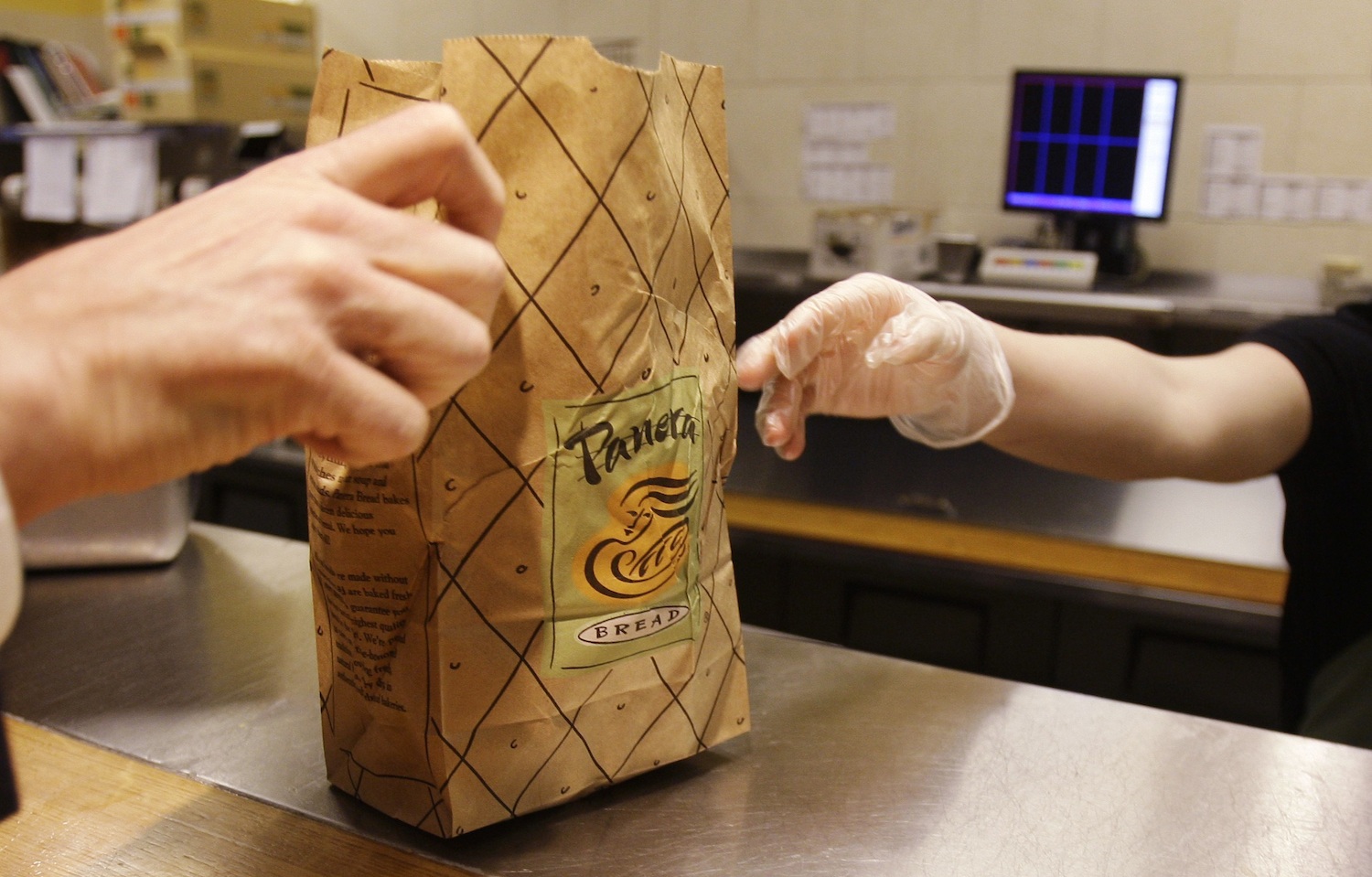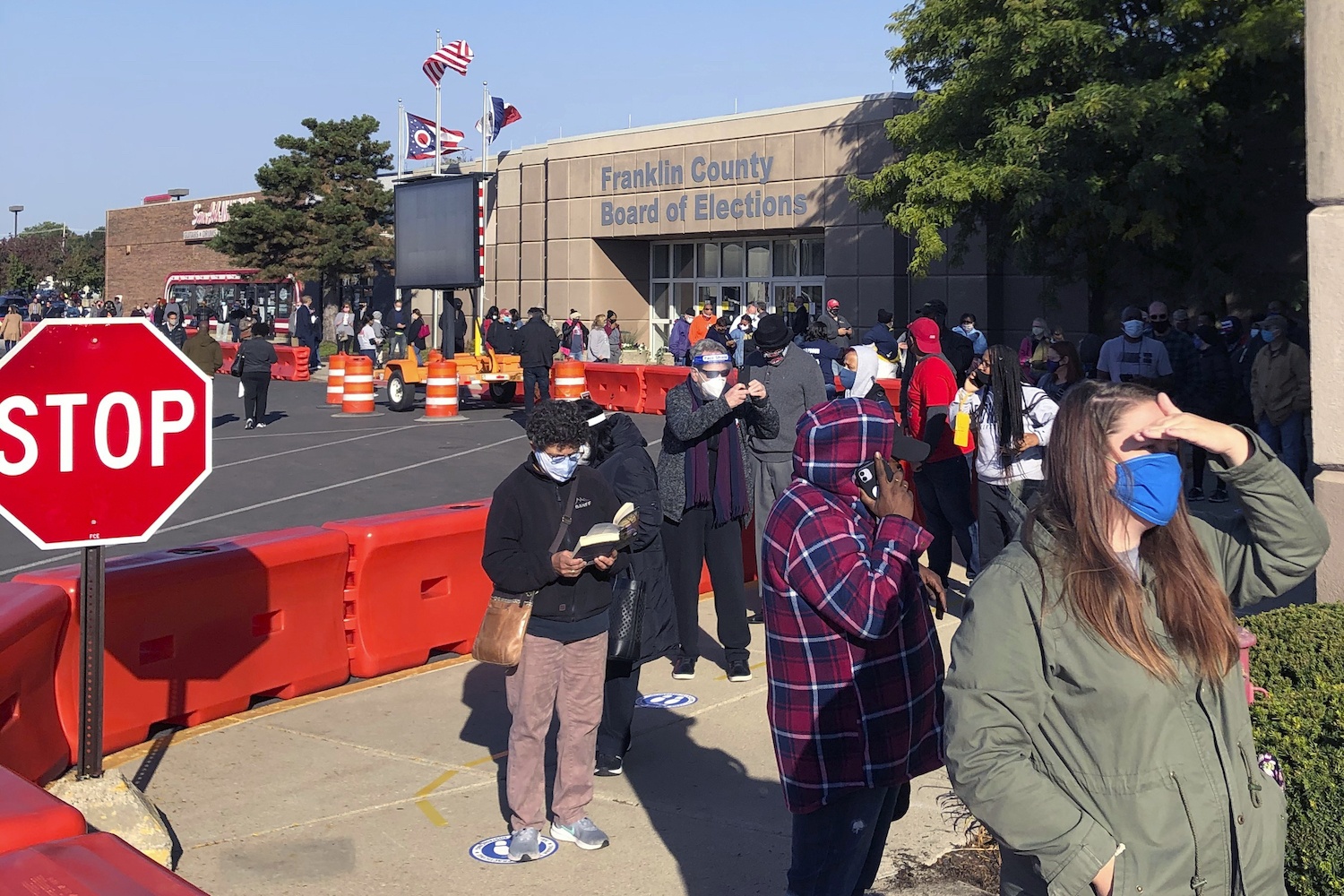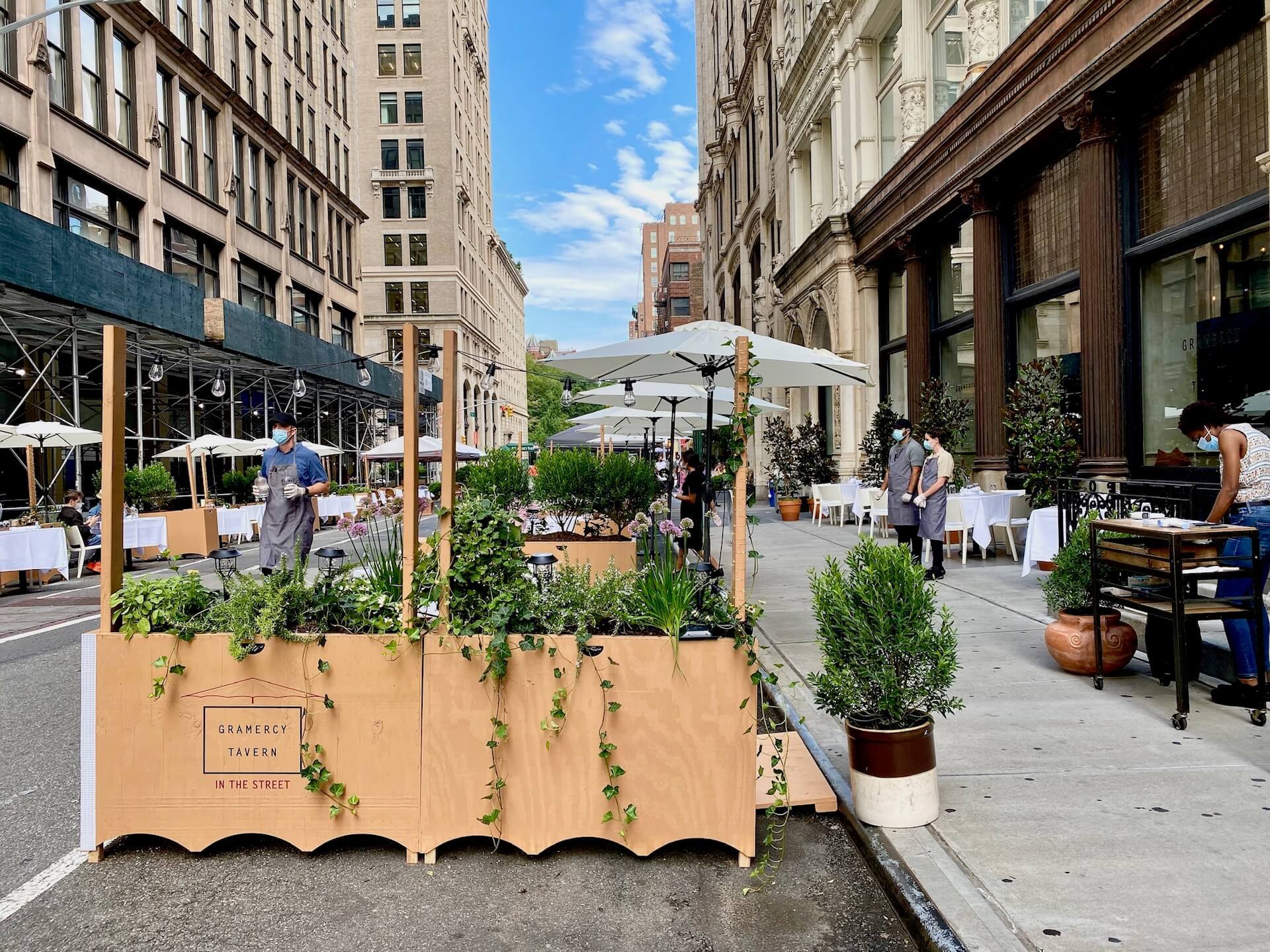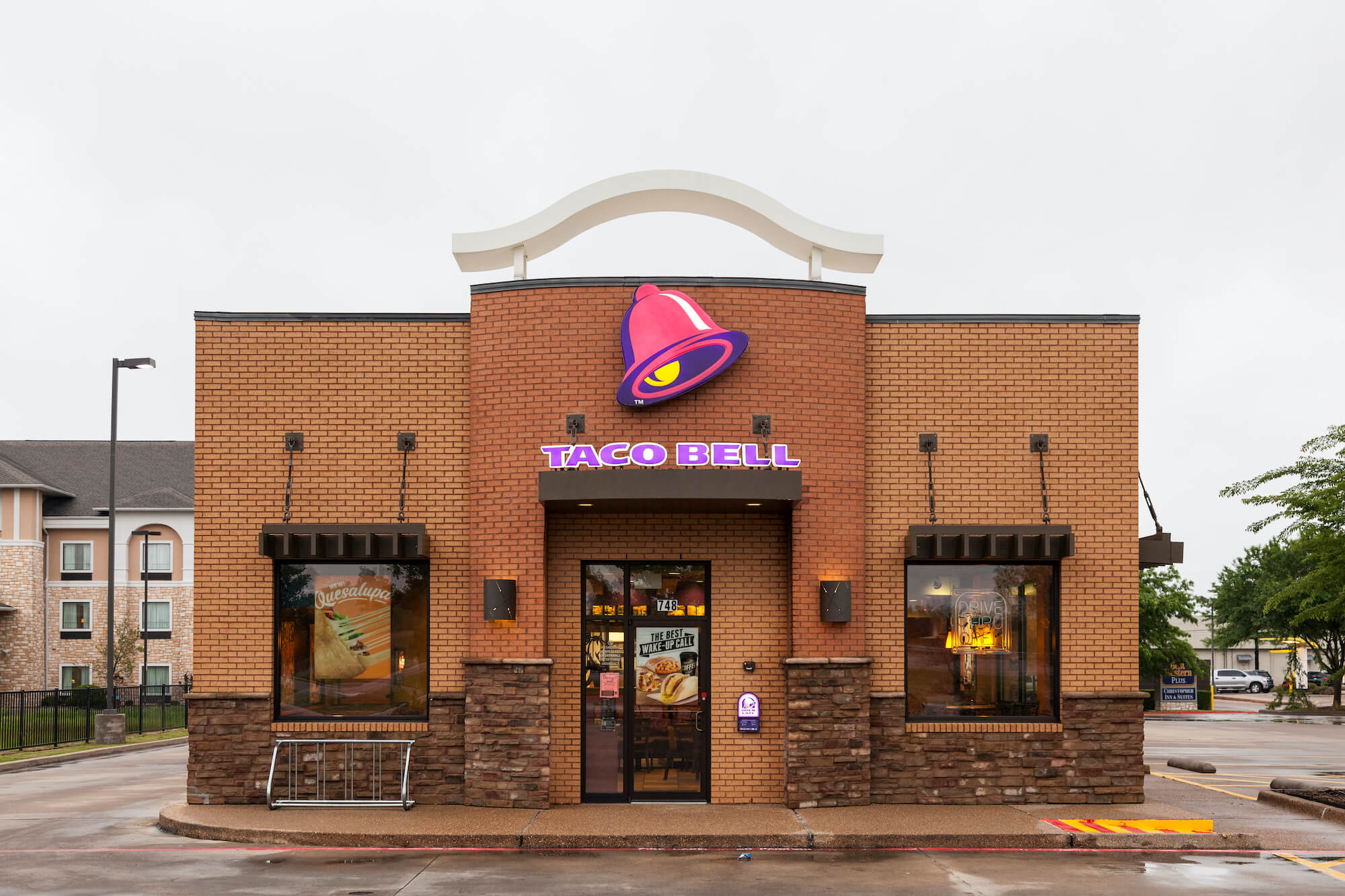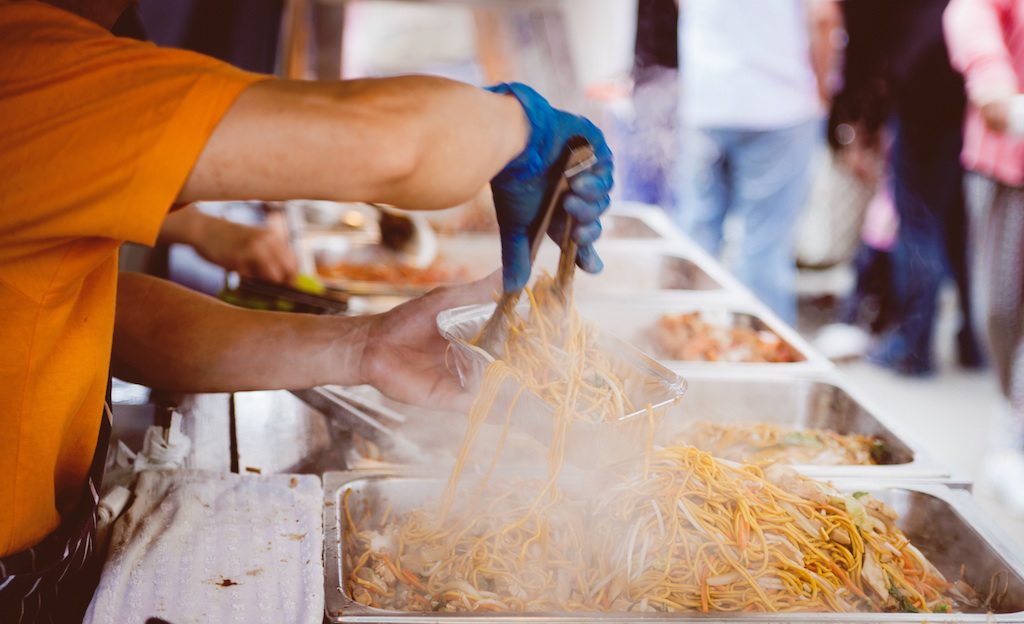Local restaurants can serve as a vital “third place” for people to gather, away from their homes and workplaces. When these spots shutter, the loss is keenly felt.
Annelies McMorran opened her restaurant, Anna Lee’s, in 1983, with a sense of community built into the business plan. It was a casual lunch spot a block off the busy Holcomb Bridge Road in Roswell, Georgia, with seating for 60 in sturdy wooden chairs, an acoustic-tile ceiling, a counter displaying fresh-baked desserts, and, from the outset, a community table, where patrons could eat and converse with whoever else happened to be there. McMorran intended it to be a place to find unplanned company and camaraderie. “People who were alone would sit there and expect others to join them and were hospitable about offering advice or part of themselves,” she said in a recent phone call.
Sometimes, the community table held just a few people; other times, it was a large group unto itself. McMorran and her staff would extend it as needed, adding more tables to accommodate more guests. She once saw 17 people gathered there, a mix of solo diners and couples who “had said enough to each other for all the years” and wanted to talk with someone else for a while. The emphasis on creating a welcoming environment extended to McMorran’s hiring practices, too, and she sought out people who she thought “needed the place the most,” who would benefit from the sense of belonging she tried to cultivate.
McMorran never advertised Anna Lee’s, and it didn’t get a lot of press. There were no craft cocktails, no cutting-edge cuisine. The food was squarely in the comfort category: soups, salads, sandwiches, a few entrees, some cakes and tarts. The low-key familiarity, on the plates and in the convivial atmosphere, was the point, the most effective marketing—this is what, appealed to loyal patrons and drew in new customers. Anna Lee’s was its own micro-community.
And then the pandemic came.
—
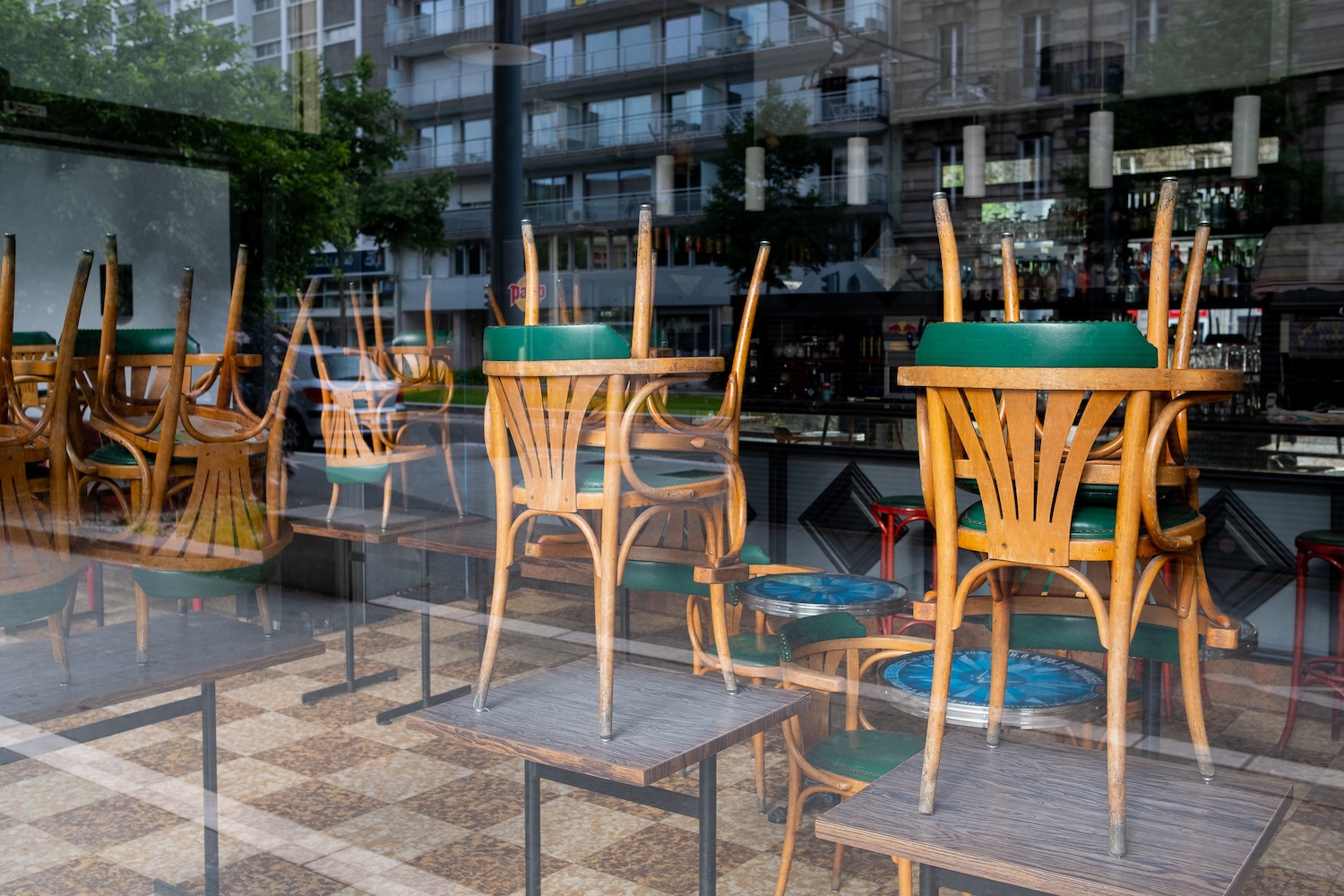
Many of us miss the very experience of dining out, not for the food so much as the sheer joy of gathering.
iStock/ Anthony RacanoBy the end of 2020, Covid-19 had led to approximately 110,000 permanent restaurant closures in the USA—17 percent of all restaurants in the country—according to the National Restaurant Association. Local media around the country is filled with long lists of all the spots that have gone under since the pandemic began. There have been plenty of elegies for the most prominent departures, all the Best-of list stalwarts, the historic destination eateries, the places soon to be recalled as “the late, great.” Pok Pok in Portland, Mission Chinese Food in New York, El Chapultepec in Denver, Blackbird in Chicago, the Brookville Hotel in Abilene, Kansas. Cliff House in San Francisco had been around since 1863; City Tavern in Philadelphia served beers to Ben Franklin and friends in the 1770s; both closed due to the pandemic.
The laid-back cafes, coffee shops, diners, barbecue joints, pizzerias, and pupuserias that dot every neighborhood and town—they may seem basic and unmemorable, but they’re doing the unsung work of knitting together the social fabric, one meal or cup of coffee at a time.
They’re all worth mourning, of course. But in the coverage of the immeasurable financial and cultural toll Covid-19 has taken on the restaurant industry, what’s often missed is the social impact when even lesser-known businesses close. Because, as corny and obvious as this may sound, the key feature of many restaurants is not what’s on the menu so much as the people who gather inside the walls, and it’s worth taking a step back from the usual focus of food journalism—the captivating flavors, the intriguing origin stories—to take a closer look at this social context. And that consideration is all the more important right now, when it’s simply not safe for people to gather in close proximity, and so many of us miss the very experience of dining out, not for the food so much as the sheer joy of gathering.
There are countless restaurants like Anna Lee’s across the U.S. The menus and location vary, but some essential details are consistent: They get little media attention and have no particular concern for trends, but have succeeded precisely because they focus squarely on serving their own community of regulars. In some small towns, they may be one of the only communal spaces of any kind, outside the park and the library. They’re the real-life, food-focused version of the bar in “Cheers,” a sitcom that resonated not for insights into the world of craft beer but for the recognizable environment and familiar human interactions. (Incidentally, the tourist-targeted Cheers at Faneuil Hall in Boston closed in August, another victim of the pandemic.) The laid-back cafes, coffee shops, diners, barbecue joints, pizzerias, and pupuserias that dot every neighborhood and town—they may seem basic and unmemorable, but in functional, everyday terms, they’re the quintessential American restaurants, doing the unsung work of knitting together the social fabric, one meal or cup of coffee at a time.
—
Much of this may seem intuitive. Of course there are all kinds of restaurants and of course many of them have regulars and of course they’re integral parts of any given geographic place—you can feel it just by considering the beloved, essential places in your own community, and the layers of harm that would result if they disappeared. But naming this function, highlighting it, and examining it closely, reveals even greater importance than simple intuition can ever offer. These beloved places are not simply a bunch of isolated dots on the landscape but an ecosystem whose very existence is connected to the health of a society.
Restaurants like Anna Lee’s are examples of what sociologist Ray Oldenburg termed “the third place,” a space used purely for socialization. Unlike the first two places, home and work, a third place is devoid of the reminders of chores to be done, deadlines to be met, bills to be paid. “Third places compete with the home on many of its own terms and often emerge the winner,” Oldenburg writes in The Great Good Place, his landmark book on the subject. “Aye, there’s the rub—the third place is often more homelike than home.” Some businesses understand this implicitly, while others spell it out explicitly, like Starbucks’ written Third Place Policy, a long series of bullet points that begins, “Everyone should feel welcomed at Starbucks. Every person who visits a Starbucks store is a customer, whether they make a purchase or not.” (Like many corporate policies, this doesn’t always play out as promised. In 2018, two Black men were arrested for the simple act of waiting for a friend before ordering at a Philadelphia Starbucks, highlighting the fact that business-based “communities” are, by their nature, subject to the monitoring of management, which can lead to the same discriminatory practices found in society at large.)
Even when there’s not a homelike level of ease, restaurants (along with parks, libraries, and community centers) remain part of what another sociologist, Eric Klinenberg, calls “social infrastructure,” specific spaces where people cross paths and forge relationships outside their usual network of friends and family. As Klinenberg documents in Palaces for the People, there are known benefits to physical and mental health, the economic well-being of a place, and even a city’s civic health, given the importance of conversations, connections, and public trust in a functioning democracy. In restaurants, that manifests in interactions like the ones you’ll often find at Al’s Breakfast, a historic fourteen-stool diner in Minneapolis. “Oftentimes [it] feels like the center of the universe, because you’re in that tight space, you’re kind of forced to hear all of these things,” owner Alison Kirwin told me. “And so people are constantly eavesdropping on each other for some time that turns out to be really good for them.” Over a plate of pancakes, a customer casually mentions the need for a couch, for example, “and somebody is going to be like, ‘You know what? I’ve got a couch in my basement.’” And I’ve seen that happen in terms of employment, too.”
Researchers found that these businesses gave patrons a reason to get out of the house—and, if they were in walking distance, a chance to get a bit of exercise en route—and a place to feel connected.
If Al’s is a stronghold of informal, sometimes fleeting connections, other restaurants can have a more clear, focused sense of community, serving a specific population or purpose. There’s the Malibu Diner, in Manhattan, which has a core group of blind and visually impaired regulars (who live in the nearby Selis Manor) and a Braille menu for them to use. In St. Cloud, Minnesota, Nori Café, a Somali-owned coffeeshop served as a bridge across cultures in a sometimes-divided town. “We … want it to be a place where the community comes in and feels welcome, and asks questions about our culture,” co-owner Farhiya Iman told Growler magazine last spring, before the café closed permanently in August. In Minneapolis, one especially vibrant hub of the local Somali community is—yes—a Starbucks famous as a spot where, for decades, Somali men have gathered, talked politics, and “dealt with the complexity of refugee identity and adjusted to the realities of life in America, over 8,000 miles away from home.” And when MeMe’s Diner in Brooklyn closed in November, it marked the end of a space known for its welcoming, dynamic queer community. “Our version of hospitality can’t exist right now,” the owners told Eater. (As the radio show The World recently reported, the number of LGBTQ bars, particularly those that cater to queer women, has dropped significantly over the last 30 years, and the pandemic has threatened many more.)
In a paper published in August 2020, researchers at the University of Michigan studied casual eateries (such as fast food restaurants, coffee shops, and diners) and their role as third places for older adults. The researchers found that, while the food itself might not always be particularly healthful, there were measurable cognitive benefits to these places as accessible, affordable gathering grounds. These businesses, including familiar chains like McDonald’s along with independent local spots, gave these patrons a reason to get out of the house—and, if they were in walking distance, a chance to get a bit of exercise en route—and a place to feel connected. Building on the work of other scholars, the researchers found that restaurants and coffee shops “can generate a sense of at-homeness, restorative stimuli, companionship, and emotional support,” for customers of all ages.
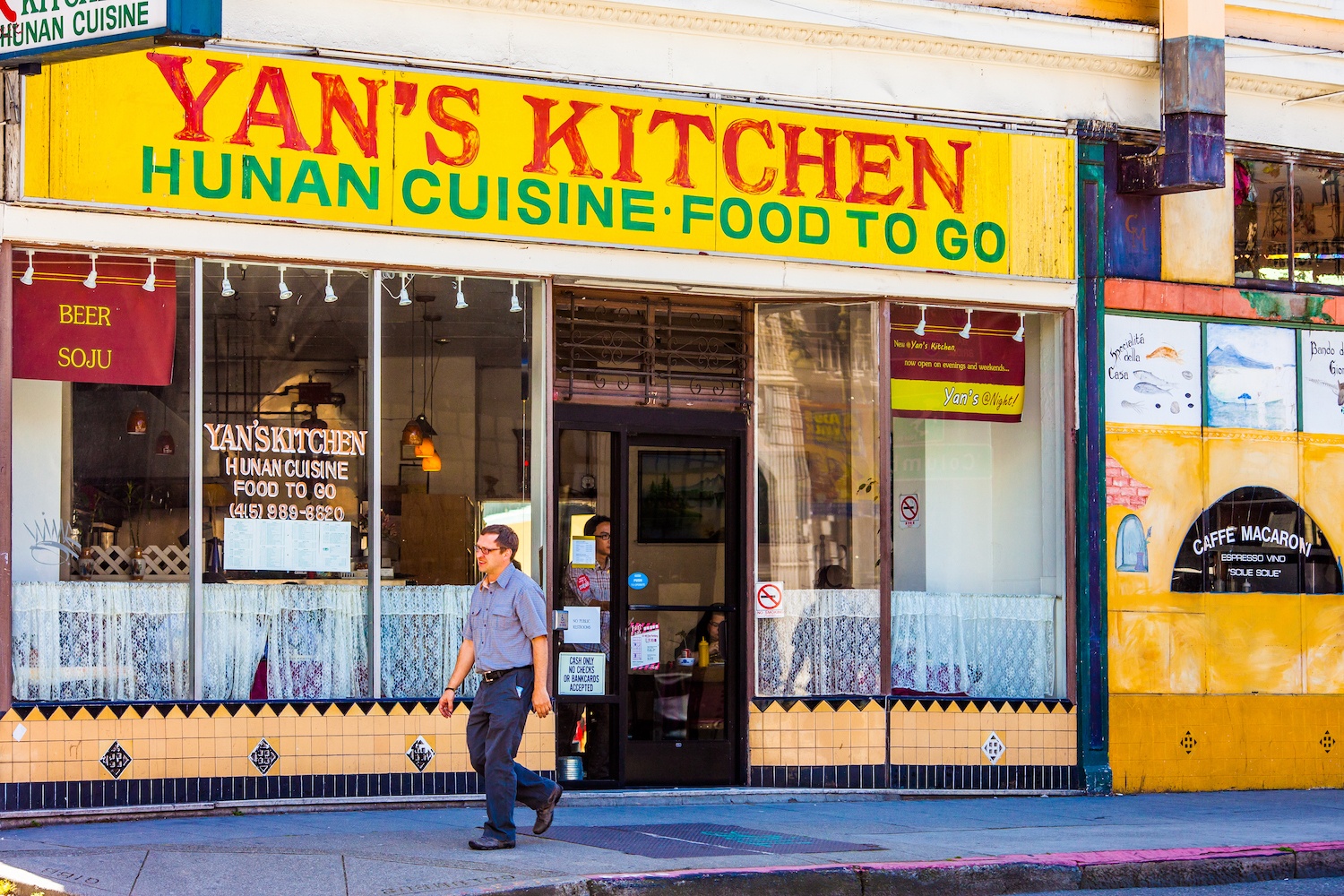
Restaurants remain part of what sociologist, Eric Klinenberg, calls “social infrastructure,” specific spaces where people cross paths and forge relationships outside their usual network of friends and family.
Those informal, often fleeting connections—what sociologists call “weak bonds”—can seem at first glance like a nice little bonus of living in a society, a filigree of quasi-relationships that offer a complement to the enduring strength of close friendships, but they can also be the source of essential needs. Jessica Finlay, the University of Michigan scholar who led the study, told me that for some customers, the staff or another customer may be the only person they talk to that day. “I’ve even seen staff in a bakery, for example, checking on a very vulnerable older woman,” Finlay said. “And they reminded her that she had a dentist appointment the next day. And they’d wait for her welfare check to arrive on a monthly basis to charge her for what she’d accrued over the month preceding.”
In at least two cities, local nonprofits have recognized this intrinsic need for socialization, especially for older adults, and made their own restaurants to serve as third places. In Vinton, Iowa, Hawkeye Community Action Program set up the Fourth Street Diner, and in Vancouver, Washington, the state branch of Meals on Wheels recently established The Diner. Before the pandemic and the restrictions that came with it, the diners served as both dining facilities for older adults and full-service restaurants for everyone. The Diner in Vancouver played right into the current hipster-diner trend, with vintage fonts on the menu, retro green booths in the dining room, and a hamburger topped with a fried egg—appealing to the older patrons, but also to younger ones, in hopes that they’d come and converse across the generations, joining the fight against isolation through milkshakes and conversation.
Once again, though, the pandemic changed everything. The Diner is now takeout-only, offering food but not the nourishment of socialization.
—
In times of crisis, it’s human to want to gather and commiserate and grapple with the hardship together. It’s well-documented that Covid-19 has led to a secondary pandemic of loneliness, depression, and isolation—we need social infrastructure and third places more than ever. But, because of real and important public-health considerations, we can’t have them, at least not in the form that’s most needed.
Even if they can’t be together in the same physical space, some loyal networks of regulars and fans have gathered in a more socially distant way to keep some small restaurants alive, despite everything. There’s an immense, incalculable desire to see these places through, to make sure they’re still there on the other side—a place to celebrate when it’s all over, to mourn what we’ve all lost, to simply be together again. There have been GoFundMe campaigns for B&H Dairy in New York (funded), the Bullfish Bar and Kitchen in Baton Rouge (funded), El Camino Mongolian BBQ in Santa Clara (not funded), among many others, and countless public pleas, through social media pages and news stories, to come and get some takeout.
At Al’s Breakfast, it’s the to-go orders from longtime customers that have kept the doors open. They sometimes spot each other and get a brief glimpse of the third-place atmosphere that’s currently unavailable inside. “Every once in a while they happen to come in to get takeout at the same time,” Alison Kirwin told me. “And it’s like this great reunion that happens out in front of our little shop on the sidewalk and people legitimately miss talking to each other. They don’t necessarily have outside ties to each other, but what has become a really important tie inside Al’s is missed greatly during this time.”
“Every once in a while they happen to come in to get takeout at the same time. And it’s like this great reunion that happens out in front of our little shop on the sidewalk and people legitimately miss talking to each other.”
Still, even with these glimmering bright spots, these blinks of connection and beacons of hope that some sense of normalcy will eventually return, it’s impossible to overstate the social void that exists when restaurants close to dining together, even temporarily, and even when it’s a public-health necessity. There’s nothing quite like being elbow-to-elbow in a physical space with that informal community of loose connections and semi-acquaintances, who come and go throughout the night, with no schedule, no agenda.
—
Around the United States, third places as a general category are in decline. One of Jessica Finlay’s other recent papers, published in 2019, focused on this subject, finding a precipitous drop in certain sub-categories, especially retail stores, since the Great Recession. They also found, however, “a notable exception in the rising number of eateries”—a bright spot for the maintenance of social infrastructure. Now, though, the pandemic is well on its way to reversing this trend, putting restaurants on the same dismal trajectory as other sectors, and erasing even more third places from the landscape.
Back in Roswell, Georgia, Annelies McMorran finally decided to close Anna Lee’s in July. She’d tried takeout, but it didn’t suit her or her business model. “I said, you know, takeout is not my interest. I want to hug people,” she told me. “I want to have contact with people. I want to be able to listen.” There were other factors in her decision—the restaurant needed some physical upgrades, and she wasn’t sure it was worth the money to do them—but the pandemic made her path clear.
“I was very disappointed because I thought I would go out with the party,” she said. “You know, we’re celebrating, all this is over, invite 10 of your favorite customers, and we’ll have an evening of goodbye to Anna Lee’s. And it didn’t work out. It just sizzled, just sort of died.”
“I said, you know, takeout is not my interest. I want to hug people. I want to have contact with people. I want to be able to listen.”
Shortly after McMorran closed her restaurant forever, at the end of July, a longtime patron offered to buy the business and keep it going, a testament to the community that McMorran had built over the course of more than 30 years. She agreed, and Anna Lee’s reopened under new ownership on August 24. It’s not the same, of course. McMorran still comes in early, before anyone else arrives, to make the desserts—Kahlua mousse, coconut cake, butterscotch walnut tart, and a double chocolate tart—but then she leaves. The tables are spaced farther apart than usual, an important move for current social-distancing mandates, but not great for impromptu conversations with your neighbors.
But what can you do? How do you keep a sense of normalcy in such abnormal times? It’s an existential struggle, one faced by the lucky restaurants, the ones that are still open. And it’s worth remembering that these questions and dilemmas are playing out across the country, and the answers matter even when the restaurants themselves are unnoticed in the food media, or aren’t really known for their food, even for their loyal fans. If these third places disappear, the closures may not all make headlines, but the effects of each are incalculable. The loss of these social spaces hasn’t been discussed much, but as the pandemic continues and closures continue apace, it may yet be the most important story in the restaurant world. These restaurants are trying to survive, trying to do right by the communities that sustain them and the communities they sustain. Each one is the center of someone’s universe on the verge of collapse.
